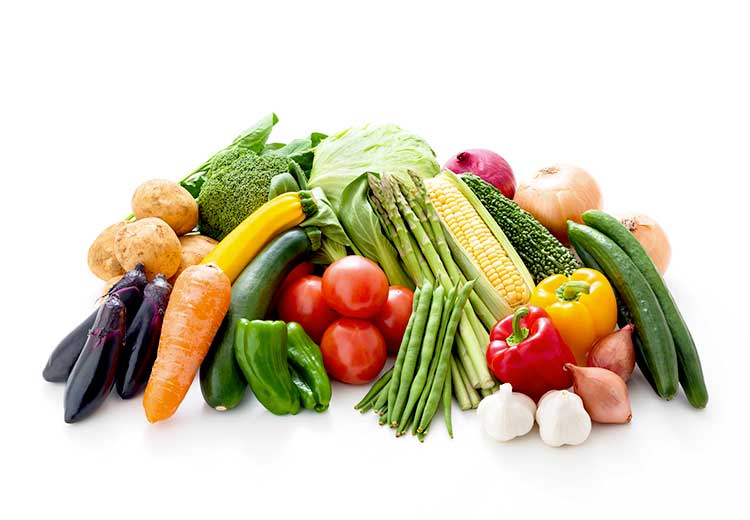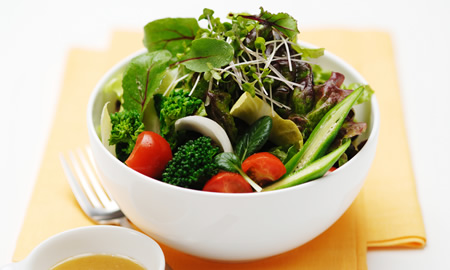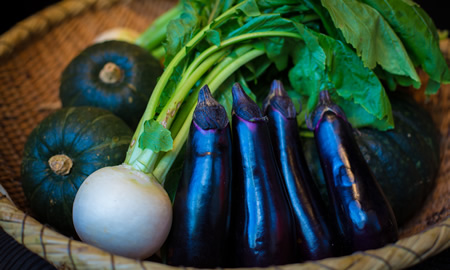Essiential Ingredients of Japanese Food - Vegetables

Vegetables
A collaboration of humans and the nature
See the change of four seasons with vegetables

Japanese agriculture skillfully uses the difference of regional characters and the change of seasons that are seen in Japanese natural environment. Japanese agricultural styles are gentle to the nature because it have been developed using the advantages of different climates and cultures.
Although greenhouse cultivation has allowed us to enjoy various vegetables throughout a year, vegetables are still an important season teller in the market. Japanese cuisines have been developed to maximize the advantage of the natural tastes of various ingredients using cooking methods that are suitable in each season.
High quality and reliability based on long years of researches

To achieve easier cultivation methods to grow more delicious vegetables, vegetables makers have endeavored to provide more reliable and delicious vegetables through continuous researches on variety selection and adequate agricultural methods. It is not surprising that vegetables can be eaten in raw in Japan because we all know how reliable Japanese vegetables are.
To use chemicals in farming, farmers must comply with GAP (Good Agricultural Practice) designated by the Japanese government. Therefore, the level of agricultural chemicals that remains on harvested agricultural products must be within the range of the MRL (Maximum Residue Limit) defined in a system called the Positive List System. The temperatures for a transportation of vegetables are controlled under domestic transportation systems to maintain their freshness. Similar know-hows are used for exporting them to neighboring countries, in which vegetables are packed in adequately designed boxes to prevent them from getting damaged.
Traditional vegetables loved by local people

Some vegetables, produced in local areas since an old time, have its own cultivation methods that meet the climate and culture of the local area. These vegetables are called "traditional vegetables". Kyo-yasai (vegetables from Kyoto) and Kaga-yasai (those from Ishikawa Prefecture) are well-known. Other traditional vegetables are being nurtured throughout the nation. There are many local cuisines cooked with these vegetables. Traditional vegetables are closely related to local food culture.
For most of traditional vegetables, it is difficult to be cultivated a big quantity because a lot of labor is involved in its cultivation processes. Surely there were times in the past, where the crop yields of these vegetables have declined. However, a recent trend that accepts the concept of "local production for local consumption" (chisan-chishou in Japanese) and attempts to protect traditions have paid attentions to such traditional vegetables. Yet, traditional vegetables are still expensive ingredients as they are hardly seen in the market due to small production.
